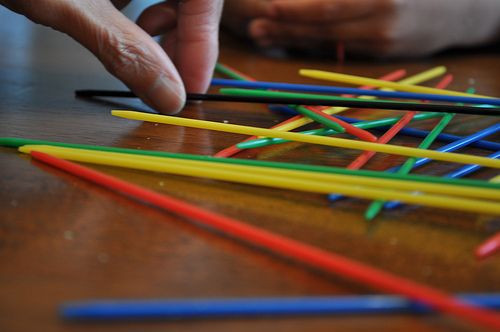The Brain’s Number Map Shows Humans’ Ability To Count A Near ‘Sixth Sense’: Can We All Be Like Rain Man?

OK, we may not all be able to look at a bowl of rice and instantly count the grains. But the fact that we can look at seven grains and instantly know there’s seven is nearly as impressive, new research argues. Scientists from Utrecht University in the Netherlands now report in a study that the human brain has a near “sixth sense” for interpreting quantity, much in the same way it maps sensory information from the outside world.
Scientists have known for decades about the homunculus, the oddly-proportioned “little man” that represents how much or little space on the somatosensory cortex each body part makes up. For instance, the homunculus has enormous lips and hands but thin arms and legs — reflecting our keen senses of touch and taste, but the relatively dumb use of our limbs. The latest breakthrough pegs our sense of numbers as working the same way. We can look at three cookies and, without counting, just know, “Three.” There are limits to this — we have trouble above eight or so. But it opens doors to understanding how the brain processes information, and for purposes totally unrelated to numbers.
To get a better grasp of the way we process quantity — what the team called “numerosity” — researchers hooked subjects up to an fMRI (functional magnetic resonance imaging) scanner. They measured the participants’ brain activity as they were shown quantities of colored dots. Researchers found a patch of neurons in the upper back portion of the brain, known as the right superior parietal lobe, lit up to small numbers with activity moving horizontally, toward the middle brain, as the numbers increased.
More critically, the regions lit up according to relative, not absolute, quantities. If subjects were shown a range of dots in one setting, from three to 13, the outermost region would activate. If they were shown four to 14 in another, it would still recognize the lower bound and activate. Similarly, low numerosity showed preference for differences at low quantities. This makes sense. You can easily tell the difference between three and four objects, but have a much harder time seeing the difference between 13 and 14. Subjects’ estimates tended to fail around five or so objects.
"One subject we measured was just beautiful," study leader Dr. Ben Harvey told NPR. "His brain responds all the way through the number eight."
Scientists Still Reading the Map
While past research has delved into the effects of heightened number sense — infants’ number sense was shown to predict their future math skills, for example — this is the first study to outline the map locally in the brain. "There are maps on the brain that represent the surface of the skin — or the surface of the retina," Harvey told NPR. "These all reflect an external organ. We found the first map for a cognitive function."
The team found that small numbers marshal more neural power than do large numbers, potentially shedding insight on why grasping them immediately is so effortless. What remains unclear, however, is how exactly the numbers are conceptualized. Do we anchor the abstract concepts to distinct regions in the right parietal lobe? Or do we just have a crude sensory framework that judges relative quantities, like for normal stimuli?
These are questions to be answered in future research, but in the meantime, experimenters like Harvey and his colleagues see great potential in using their findings to fuel subsequent studies. They hope to investigate the cognitive processes, for instance, of higher-functioning people — who may, indeed, be capable of counting their grains of rice at first glance.
"The idea is well known because of the movie Rain Man, but few such people exist. And we haven't scanned one," Harvey admitted. "So we don't really know whether they are doing the same task — that is, determining large numbers quickly and accurately, like we all do for small numbers. We would be very excited to meet one of those savants."
Source: Harvey B, Klein B, Petridou N, Dumoulin S. Topographic Representation of Numerosity in the Human Parietal Cortex. Science. 2013.



























